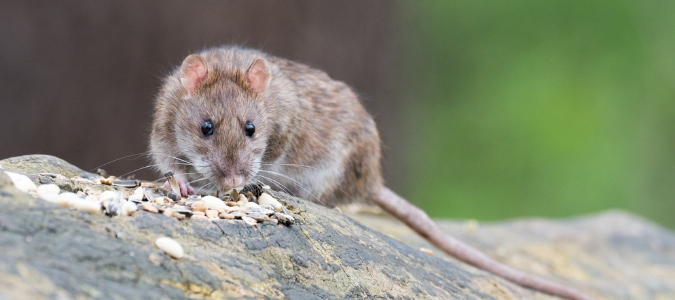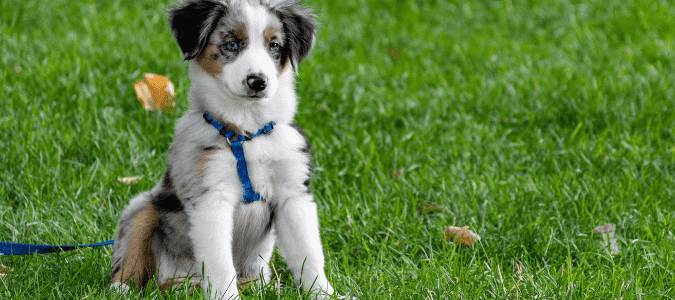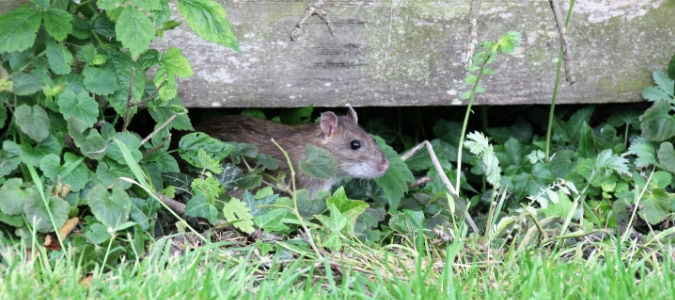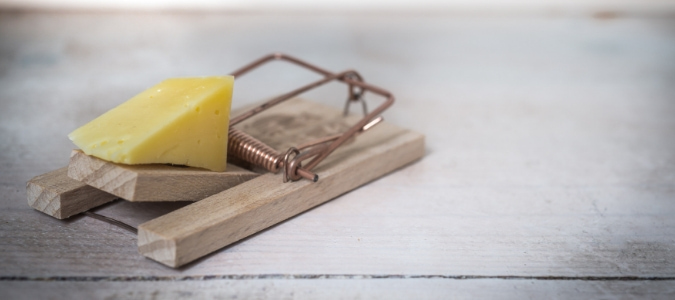
Many homeowners who have dogs may wonder, Do rats eat dog poop? Before you begin to snicker, consider that it’s a fair (and common) question, especially if you’re dealing with a rat problem—or even a full-fledged rat infestation. Trying to figure out what food sources you’re inadvertently providing your unwelcome visitors is a smart strategy since prevention is almost always easier than finding a cure. To put it another way, it’s easier, not to mention safer and more humane, to make your home and property unattractive to rats than to try to deal with a rat infestation by trapping or coming into close contact with the rodents themselves.
To keep rats away from your home and yard, or to get rid of them once they’ve moved in, it’s essential to have an effective plan in place. Rats aren’t just “gross,” scary or pesky; they can actually pose a real danger to you and your loved ones, including family pets, as they carry diseases and disease-causing bacteria like Leptospirosis, hantavirus and the bubonic plague. (Yes, this is the same plague that rats spread during the Middle Ages, killing half the population of Europe.)
Rats can also cause extensive damage to your home or garage, and can even cause a fire risk. Their long, sharp front teeth grow continuously throughout their lives, so they have to chew regularly to keep them filed down. Knowing this about rats helps to understand how rats have been known to chew through drywall and electrical wires in people’s homes. These animals’ urine and feces also pose real health risks to humans, and their fur dander and droppings can even cause allergic reactions. For all these reasons and more, it’s important to keep rats away from your home, and if they move in, to address the problem as soon as possible.
Read on to learn about whether rats eat dog poop, what else they feed on, and what other factors might make your home attractive to rodent families in search of food, shelter and protection.
Does Dog Poop Attract Rats?
The jury is still out on whether rats truly love to eat dog poop or whether that’s just a popular urban myth. Some scientists who study rats, along with some pest-control experts, claim that rats are definitely attracted to dog poop and will happily feed on it if it’s available. Other experts say dog feces is actually pretty low on the list of foods (and non-food items) that draw rats to people’s homes and yards.
Whether rats love eating dog poop or only turn to it if no other food source is available, it’s still a good idea to clean up after your pets after they relieve themselves outdoors. It’s also wise to consider other things in your yard and around your home that might be attracting rats, so you can eliminate them and thereby deter rats from your yard.
How To Deter Rats From Yards And Outdoor Spaces
When rats have access to food, water and shelter anywhere near your house, there is a much higher chance that they’ll eventually make their way indoors. Knowing how to get rid of rodents can be a difficult task. For this reason, it’s important to take steps to deter rats from your yard and property. The very first step is to learn the signs that indicate the presence of rats. If you spot one or more of the following, you could have a rat problem in your home or yard:
- Burrows. Outdoors, rats often nest in the ground beneath woodpiles, shrubbery or rubbish heaps that camouflage the entrance and exit holes leading to and away from their burrows. Rat holes in the ground are usually several inches in diameter and surrounded by smoothed-over dirt.
- Feces. An accumulation of rat droppings, whether indoors or outside, indicates that rats have spent time there. Rat feces look like long, skinny pellets. They are usually about ⅜ of an inch long and ⅛ to ¼ of an inch wide, with rounded tips. They start out dark brown or almost black in color, but they tend to lighten as they age.
- Sounds of scratching, scurrying or other movement in walls or attic. When a family of rats is living in your walls or your attic, you can often hear them moving around. You may hear them more often in the evening or at night, since rats are typically nocturnal. Your pets can hear them, too, perhaps even more acutely than you can; sometimes, a dog or cat staring fixedly at a wall is a sign of the presence of rats or other critters.
- Gnawed holes in drywall or baseboards. Rats can chew through various types of materials, and they like to follow the same route over and over as they move through their day (or night, as they are most active in darkness). These rodents use their sharp front teeth to gnaw holes through walls, baseboards and door frames, to incorporate in their paths through your home.
- Greasy smudge marks on walls or baseboards. The natural oils in rats’ fur leave smudge marks on the walls or baseboards they walk along as they follow their usual daily paths. You might spot these just above floor level, but they can also be found higher up, along walls at the top of shelving, for example, or along the top of attic beams that run along the ceiling.
Once you have confirmed that rats are indeed living or active in your yard or home, the next step is to determine their sources of food, water and shelter so you can either eliminate these altogether or cut off the rats’ access to them. There are many things that can attract rats to your yard. Even the plants you grow in your garden can attract them, especially if you have berries growing. Rats particularly love berries of all kinds, including raspberries, blackberries and blueberries, so either find a way to enclose your berry-producing plants or plant something else entirely.
Rats also love eating other types of fruit, plants and seeds and even enjoy noshing on tree bark, grass and weeds, along with other kinds of plant matter. Picking up any fruit that falls from fruit trees in your yard, keeping weeds out of your garden and getting rid of fallen tree branches are all important strategies in keeping rats away.
Since rats require regular access to water, it’s also smart to cut off any potential water sources. Be sure to fix any leaky hoses, pipes and AC units, and dump out standing water from planters, old tires and even puddles. Keep bushes and other vegetation trimmed, and if you have to keep piles of wood or other items around, keep them well away from your home and garage. It’s also smart to elevate them off the ground on metal racks, if possible.
What Do Rats Eat In Your House?
The short answer to the question, “What do rats eat in your house?” is, “Anything they can find.” Rats are scavengers, and highly adaptable ones at that. They are also voracious eaters, capable of consuming a third of their own body weight in a single day. This is how they’ve made such a nuisance of themselves in people’s lives for so long. Rats thrive when coexisting with humans precisely because we provide them with so much food, shelter and protection. Our leftover food and food waste make a perfect meal for a rat family.
Rats don’t eat only things we would consider food, however. They have also been known to eat an extensive array of household items, including fur and leather goods, fabric, candy, trash and even soap. If you have pets, it’s best to feed them inside and store their food indoors in metal or thick plastic containers, as rats love eating all kinds of pet food, and they are adept at chewing through materials like plastic that might stand between them and a yummy food supply. Rats also adore garbage, so be sure to keep your trash in heavy-duty bins with airtight, well-fitting lids, to cut down on the possibility of a breach by unwanted critters. This applies to indoor trash cans as well as outside bins.
Keeping rats out of your house requires starving them out by cutting off their access to food and water sources, but you’ll also need to cut off their physical access to your home by sealing off any holes that might allow them entry. Make sure all windows and exterior doors are well-fitting with proper seals, and close off any holes in your foundation, eaves or walls that are larger than a half-inch in diameter, as rats are adept at squeezing through small spaces.
What Do Rats Love To Eat?
Berries seem to be a particular favorite for rats, but there are plenty of other food (and non-food) items they love to eat. Other favorites include meat, nuts, seeds, garbage and—somewhat oddly—salt. Though a hunk of cheese is a traditional type of bait to use in rat traps, many people who set out traps swear by items like bacon, which may be especially attractive to rats because it’s so salty. Peanut butter is another good bait to use in a snap-trap since it’s harder for a wily rat to remove without setting off the trap. Keep in mind, though, that rat traps aren’t safe to use in areas where children and pets might encounter them.
ABC Will Handle Your Rodent Problem
Trying to handle a rat problem on your own is both difficult and risky in a variety of ways. Setting out rat poison poses a health risk to any children, pets or non-pest wildlife that may spend time in or around your home. Rat traps are safer and potentially more humane method of eliminating rats than poisons, but they aren’t very effective in the case of a real rat infestation. How long do rats live? Rats are extremely prolific, and they can produce far more babies than most homeowners will ever be able to trap. Worse still, cleaning up rat urine or feces exposes you to both allergens and dangerous pathogens that could affect your health. For all these reasons and more, if you have a rat problem, especially a large-scale one, it’s best to call on the professionals at ABC Home & Commercial Services to resolve the issue. Our pest control specialists are experienced with rat problems both large and small. We can devise a plan involving multiple strategies to tackle your rodent problem and eliminate rats for good, so you can enjoy a safe, pest-free home and yard.



